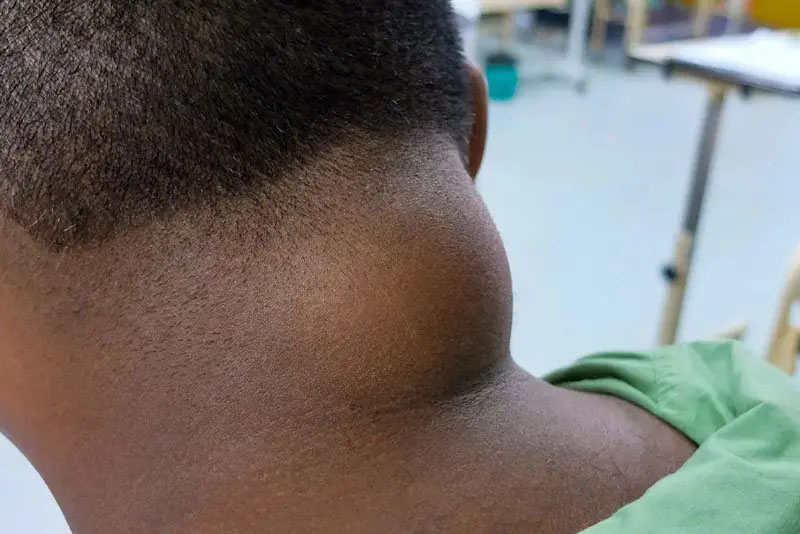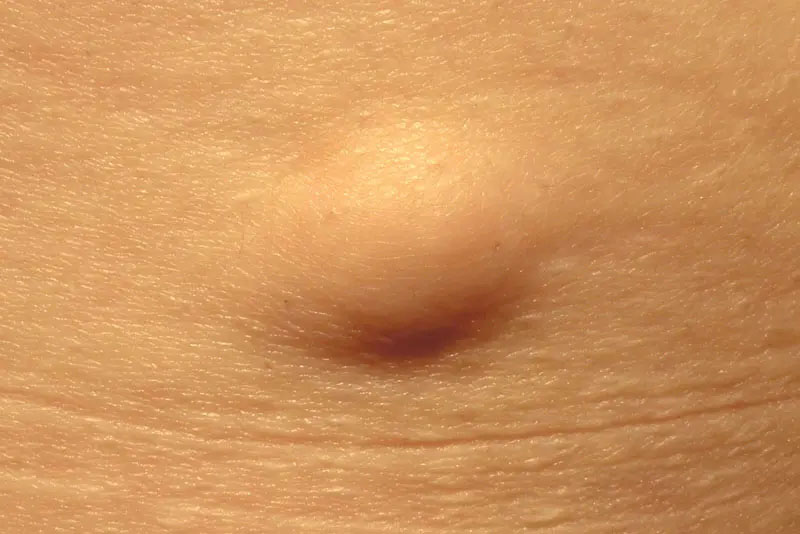Introduction
What is a lipoma?
A lipoma is one of the commonest lumps found in the body and is non cancerous (benign). A lipoma is a growth of fatty tissue derived from our normal cells in the body called fat cells (adipocytes). They can present innocently over a few months or you may have noticed it there for a long time. They can also present as multiple lumps in different locations (multiple lipomatosis).
Lipomas can occur anywhere on the body. The commonest locations are the arms, legs, shoulder, chest, and back of the neck just beneath the skin. Sometimes they can also present deep within the muscle so may not present as a distinct lump but more of a swelling on the limb.
Most patients have had a lump resembling a lipoma for a while or some may appear relatively recently. Any lump which increase in size or causing pain should be reviewed by a clinician.

Symptoms
Lipomas rarely cause pain and usually are asymptomatic. They may rub on clothing or cause irritation. If large they can press on local muscle and nerves therefore causing pins and needles for example. This is particularly the case if a large lipoma is on the back of your neck or on your back. Very large lipomatous tumours can be deep and cause diffuse swelling, pain and reduced function. Atypical lipomatous tumours (ALT) can grow to beyond 10cm in size and become very large thus compressing on local structures. The commonest sites for such large lipomas are the thigh, groin and arm.
Causes
It is not known why such lumps can grow in size. There are very few reasons why they can do but localised trauma may make the lipomas feel harder than normal. Rarely, individuals may have multiple lipomas that may be cosmetically unsightly or cause irritation whilst wearing clothes or exercising. There may be a rare genetic component and it is associated with a condition called Dercums disease /lipomatosis.
Larger lipomas may become Atypical lipomatous tumours (ALT) which are very large lumps which can present superficially or commonly within the muscle. They can subsequently cause pressure on local structures like muscle, nerves and vessels and can very rarely be cancerous.
Diagnosis
Majority of fatty lumps / lipomas are diagnosed clinically by the clinician. Lipomas are not cancerous and are classed as benign lumps. The size of the lump is assessed and most lumps less than 5cm do not require investigation unless there is pain, a change in size or if its located in the deeper structures. If further imaging is required to determine the nature of the lump (commonly done if larger than 5 cm) then most lipomas can be diagnosed with an ultrasound from our specialist radiologists. Some will require further assessment, particularly large lipomas with an MRI scan and an injection of a dye (contrast) may be required. Very occasionally a biopsy may be required on complex lipomatous lesions which will be assessed by a pathologist.
The final diagnosis is made after excision of the lump which is then sent to the histopathologist for final confirmation. This will be communicated to you in the follow up consultation after your surgery.
What to expect from your consultation
A professional assessment of your lump by our consultant enabling you to answer any questions regarding your lump. A personalised history will be taken and a thorough assessment including clinical examination will be performed. A nurse chaperone can be offered if you wish.
Manchester Lumps Clinic runs a one stop lumps clinic. If you have a lump of concern and wish to book into this clinic please get in touch.
If the lump is bothering you surgical lipoma removal is an option and normally they don’t re-occur. Surgery can be discussed at the consultation including whether it is appropriate to excise along with a local or general anaesthetic. For self paying patients the cost will vary depending on the surgery involved and type of anaesthetic.
Where to get further information
You should seek professional advice on any lump which is either painful or getting bigger in size. This is especially important if the lump is deep under the superficial skin structures.
Follow this link to learn more about the Circle Alexandra’s health matters Q&A.
For further information please contact the clinic team.

